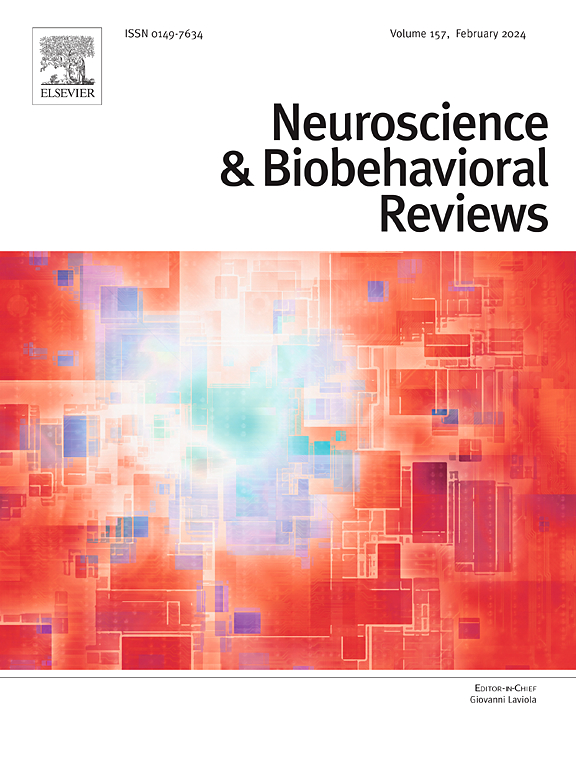Gut microbiome and mitochondrial crosstalk in Schizophrenia, a mental disability: Emerging mechanisms and therapeutic targets
IF 7.9
1区 医学
Q1 BEHAVIORAL SCIENCES
引用次数: 0
Abstract
Gut-mitochondria axis is an emerging paradigm in understanding the pathophysiology of complex neuropsychiatric disorders such as Schizophrenia (SCZ). This bidirectional communication network connects the gastrointestinal microbiota with mitochondrial function and brain health, offering novel insights into disease onset and progression. SCZ, characterized by hallucinations, delusions, cognitive impairments, and social withdrawal, has traditionally been attributed to genetic and neurochemical imbalances. However, growing evidence highlights the role of systemic factors specifically, gut microbiome dysbiosis and mitochondrial dysfunction as key contributors to its etiology. Gut dysbiosis in SCZ involves a decrease in health-promoting microbiota such as Faecalibacterium and Roseburia, as well as an increase in pro-inflammatory taxa such as Proteobacteria. The dysbiosis leads to elevated levels of microbial metabolites like lipopolysaccharide (LPS) and trimethylamine-N-oxide (TMAO), which can overcome the intestinal barrier, induce systemic inflammation, and activate toll-like receptors and microglia which drive neuroinflammatory cascades. Simultaneously, mitochondrial dysfunction marked by impaired oxidative phosphorylation, ATP depletion, reactive oxygen species (ROS) accumulation, and mtDNA mutations exacerbates synaptic deficits and neurotransmitter dysregulation, particularly in dopaminergic, glutamatergic, and GABAergic systems. In this review we summarize what we currently know about the gut-mitochondria axis as being core to SCZ pathogenesis via molecular biology, neuroimmunology, and the microbiome. We also identify potential diagnostic biomarkers and therapeutic options that could include the use of probiotics, prebiotics, mitochondrial-targeted antioxidants, and dietary modifications in restoring gut and mitochondrial homeostasis. If the gut-mitochondria axis is linked, such programs may provide improved personalization, efficacy, and mechanistic precision, for future treatments of SCZ.
精神分裂症中的肠道微生物组和线粒体串扰:新出现的机制和治疗靶点。
肠道线粒体是理解复杂神经精神疾病如精神分裂症(SCZ)病理生理学的新兴范式。这种双向通信网络将胃肠道微生物群与线粒体功能和大脑健康联系起来,为疾病的发生和发展提供了新的见解。SCZ以幻觉、妄想、认知障碍和社交退缩为特征,传统上认为是遗传和神经化学失衡所致。然而,越来越多的证据强调了系统性因素的作用,特别是肠道微生物群失调和线粒体功能障碍是其病因的关键因素。SCZ的肠道生态失调包括促进健康的微生物群(如Faecalibacterium和Roseburia)的减少,以及促炎菌群(如Proteobacteria)的增加。生态失调导致微生物代谢物水平升高,如脂多糖(LPS)和三甲胺- n -氧化物(TMAO),它们可以克服肠道屏障,诱导全身性炎症,激活toll样受体和驱动神经炎症级联反应的小胶质细胞。同时,以氧化磷酸化受损、ATP耗竭、活性氧(ROS)积累和mtDNA突变为特征的线粒体功能障碍加剧了突触缺陷和神经递质失调,特别是在多巴胺能、谷氨酸能和gaba能系统中。在这篇综述中,我们从分子生物学、神经免疫学和微生物组方面总结了我们目前所知道的肠道-线粒体轴是SCZ发病机制的核心。我们还确定了潜在的诊断生物标志物和治疗选择,包括使用益生菌、益生元、线粒体靶向抗氧化剂和饮食调整来恢复肠道和线粒体稳态。如果肠道-线粒体轴连接起来,这样的程序可能为未来的SCZ治疗提供更好的个性化、疗效和机制精度。
本文章由计算机程序翻译,如有差异,请以英文原文为准。
求助全文
约1分钟内获得全文
求助全文
来源期刊
CiteScore
14.20
自引率
3.70%
发文量
466
审稿时长
6 months
期刊介绍:
The official journal of the International Behavioral Neuroscience Society publishes original and significant review articles that explore the intersection between neuroscience and the study of psychological processes and behavior. The journal also welcomes articles that primarily focus on psychological processes and behavior, as long as they have relevance to one or more areas of neuroscience.

 求助内容:
求助内容: 应助结果提醒方式:
应助结果提醒方式:


